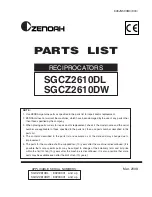
Arbor
The shaft on which a blade or cutting tool is mounted.
Bevel Cut
A cutting operation made with the blade at any angle other
than 90° to the mitre table.
Cross Cut
A cutting or shaping operation made across the grain of the
workpiece.
Compound Mitre Cut
A compound mitre cut is a cut made using a mitre angle and a
bevel angle at the same time.
Freehand
Performing a cut without using a fence, mitre guage, fixture,
work clamp, or other proper device to keep the work piece
from twisting or moving during the cut.
Gum or Resin
A sticky, sap based residue from wood products.
Mitre Cut
A cutting operation made with the blade at any angle other
than 90° to the fence.
Revolutions Per Minute (RPM)
The number of turns completed by a spinning object in one
minute.
Saw Blade Path
The area along which the blade travels.
Set
The distance that the tip of the saw blade tooth is bent (or set)
outward from the side of the blade.
Throw-Back
Throwing of a workpiece in a manner similar to a kickback.
Usually associated with a cause other than the kerf closing,
such as a workpiece not being against the fence, being
dropped into the blade, or being placed inadvertently in
contact with the blade.
Through Sawing
Any cutting operation where the blade extends completely
through the thickness of the workpiece.
Workpiece
The item on which the cutting operation is being done. The
surfaces of a workpiece are commonly referred to as faces,
ends and edges.
Zero Clearance Throat Plate
A plastic throat plate inserted in the mitre table that allows for
blade clearance. When you make your first cut with your
compound mitre saw, the saw blade cuts a slot through the
throat plate the exact width of the blade. This provides for a
zero clearance kerf that minimises workpiece tear out.
No Hands Zone
The area between the marked lines on the left and right side
of the mitre table base. This zone is identified by no hands
zone labels placed inside the marked lines on the mitre table
base.
GLOSSARY OF TERMS FOR WOODWORKING
MAINTENANCE
Page 4
WARNING: When servicing, use only identical Ryobi
replacement parts. Use of any other part may create a
hazard or cause product damage.
■
GENERAL
Avoid using solvents when cleaning plastic parts. Most
plastics are susceptible to damage from various types of
commercial solvents and may be damaged by their use. Use
clean cloths to remove dirt, carbon dust, etc.
It has been found that electric tools are subject to accelerated
wear and possible premature failure when they are used on
fibreglass boats, sports cars, wallboard, spackling compounds,
or plaster. The chips and grinding from these materials are
highly abrasive to electric tool pars such as bearings, brushes,
commutators, etc. Consequently, it is not recommended that
this tool be used for extended work on any fibreglass
material, wallboard, spackling compounds, or plaster. During
any use on these materials it is extremely important that the
tool is cleaned frequently by blowing with an air jet.
■
LUBRICATION
All of the bearings in this tool are lubricated with a sufficient
amount of high grade lubricant for the life of the unit under
normal operating conditions. Therefore, no further lubrication
is required.
■
EXTENSION CORDS
The use of any extension cord will cause some loss of power.
To keep power loss to a minimum and to prevent tool
overheating, use an extension cord that is heavy enough to
carry the current the tool will draw.
A wire gauge size (A.W.G.) of at least 16 is recommended for
an extension cord 50 feet or less in length. When working
outdoors, use an extension cord that is suitable for outdoor
use.
If the supply cord is damaged, it shall be replaced by the
manufacturer or its service agent in order to avoid a hazard.
Disconnect from the supply immediately, if the supply cable is
damaged.
Take care not to expose this tool to rain.
WARNING: Do not at any time let brake fluids,
gasoline, petroleum based products,
penetrating oils, etc. come into contact with
plastic parts. They contain chemicals that can
daamage, weaken or destroy plastic.
CAUTION: Keep extension cords away from the
cutting area and position the cord so that it will
not get caught on timber, tools, etc. during
cutting operation.
WARNING: Check extension cords before each
use. If damaged, replace immediately. Never use
tool with a damaged cord since touching the
damaged area could cause electrical shock
resulting in serious injury.
WARNING: Always wear safety goggles or
safety glasses with side sheilds during power
tool operation or when blowing dust.
If operation is dusty, also wear a dust mask.
Summary of Contents for CMS1825
Page 14: ...Page 14 NOTES ...

































